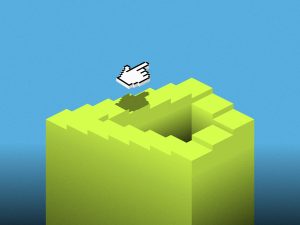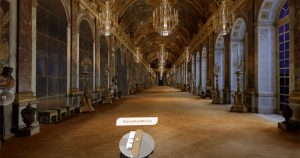So the Sooner Schooner was indeed accelerating, simply because it was turning. Also, you might notice that right before the crash, the horses seem to take a sharper turn. That reduces the radius of curvature and increases the centripetal acceleration. But why did it tip over? Torque!
Don’t Get Torqued
Physicists like to simplify things as much as possible. So for an accelerating wagon, it’s easier to think of the wagon as just a point with no dimensions, instead of an extended object. In that case the acceleration is just one vector, and it doesn’t matter where the forces are applied to the object.
But if the wagon is just a point, it can’t flip over. So clearly we can’t use that assumption here! The next level of approximation is to treat the Sooner Schooner as a rigid body—like a box. A rigid body has size and can rotate, but it doesn’t deform. Obviously, a real wagon would have some type of deformation, but this model should work for now.
When you have an object with size, the location of the forces on it matter a whole lot. If you push on something, that force will cause it to accelerate. If the force doesn’t pass through the center of mass, the force will also exert a torque on the object, causing it to rotate.
Torque can be a little confusing, so how about a quick demo to show the difference between force and torque? Place a pencil (a good rigid object) on a table and push it with your finger. If you push (exert a force) in the middle, it will slide but not turn. If you push near the end, there will be torque, causing the pencil to rotate. Forces causes objects to accelerate, but a torque causes an object to change its rotational motion.
The amount of torque depends on two things: how hard you push and where you push. A larger distance from the center of mass produces a larger torque. That’s why the pencil above will rotate more if you apply force farther away from its center. We call that distance the torque arm.
Now for a more useful example. What happens when you accelerate a block by pushing on it from the bottom? In this case, I have two blocks on a platform. (OK, it’s a Lego baseplate.) The platform accelerates to the right. Since there is a frictional force between the blocks and the platform, there is a force pushing to the right on the bottom of the blocks. For comparison, I have one block standing up and one lying down. Here is what it looks like in slow motion:
For the standing-up block, the frictional force has a much larger torque arm than on the other block. This produces more torque—enough to tip it over.



